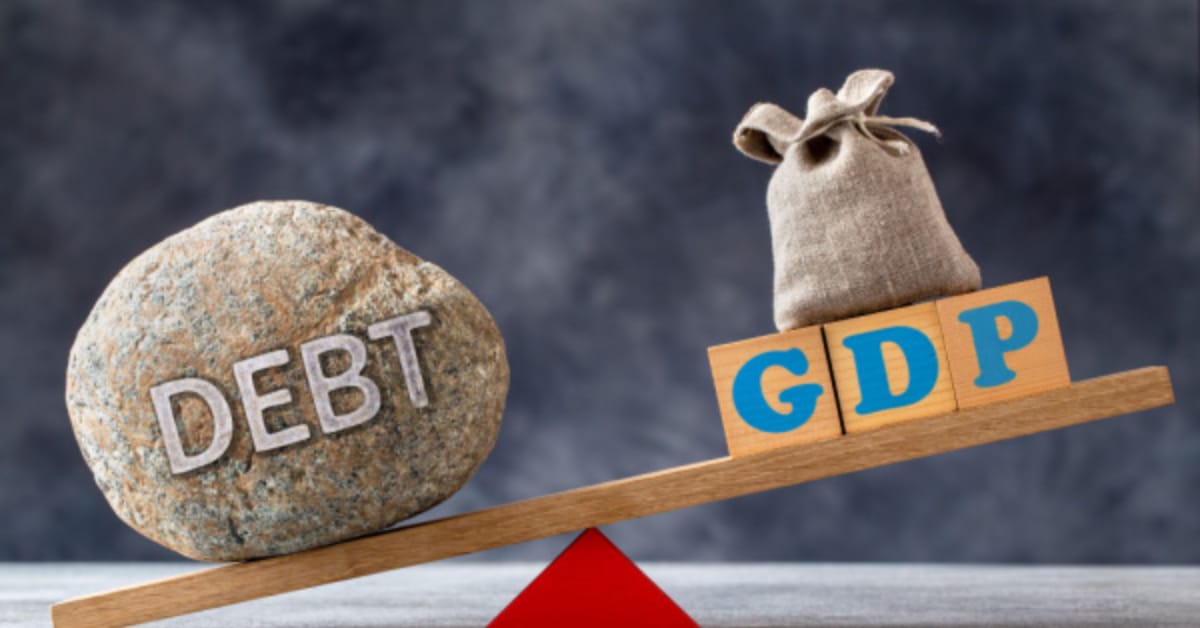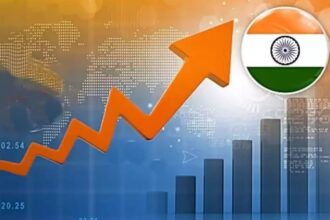Context matters — growth, ratios, debt-use and timelines, all must enter the frame
In public finance, comparing debt figures across governments without context is like comparing oranges to apples-fundamentally flawed. So, when Congress claims that India’s external debt has “skyrocketed” under Narendra Modi government, they are wielding a half-truth. Yes, the dollar value of debt has grown — but the more meaningful metric is debt as a share of GDP — and that has largely moved in more nuanced ways.
It’s one thing to peddle half truth on social media and just another to initiate and build a serious discussion on the subject. Any serious comparison must also account for internal debt, the growth trajectory under various governments, and how borrowed funds are used. You can’t critique a government using raw numbers alone, as comparing apples to oranges is misleading.
The missing denominator: Debt grew, but economy grew faster
Congress party wants us to believe that rising debt inherently signals danger. But in 2014, India’s external debt was approximately around US $440 billion which accounted for around 23–24 % of GDP. Under Modi government, by 2024, external debt reached ≈ US $747 billion, substantial in absolute terms. However, this figure represented only about 18–19 % of GDP, indicating the economy had grown faster than debt and also indicating that Modi government has chosen to not depend on external borrowings.
According to Economic Times and RBI data, external debt at end-March 2024 stood at US $663.8 billion, and the external debt-to-GDP ratio was 18.7 % (down from 19% a year earlier). In the fiscal year ended 2025, external debt rose to US $736.3 billion, and its ratio edged up to 19.1%. But even that slight uptick has to be read with care — valuation effects (exchange rate shifts) artificially inflate dollar‐denominated debt. Thus, cherry-picking “debt has gone up” without showing GDP or usage is misleading.
Internal (domestic) debt: The larger burden often hidden in plain sight
External debt is merely one leg of the total debt stool. A bulk of India’s debt is internal, means borrowings from domestic investors, government securities, state guarantees, etc. The central government’s internal debt is tracked via the Budget documents. When critics focus only on external debt, they conceal that internal borrowings often form the bulk of liabilities and have been rising. So a fair narrative has to compare combined debt (internal + external) relative to GDP across regimes.
Comparing eras of Vajpayee → UPA → NDA
Vajpayee era (till 2004): When the UPA took over from the NDA government in 2004, India’s economy and fiscal base were much smaller. Government revenues were limited, GDP was lower, and so was the debt. Thus, borrowing was constrained not just by will, but also by capacity.
UPA era (2004–2014): UPA 1 & 2 presided over expansion, but also did significant populist spending, subsidised schemes, and fiscal pressures. GDP growth in many years averaged ~7–9 %, but the fiscal deficits and internal borrowings grew rapidly. The result was an increase in total public debt, both internal and external and that buildup is part of the baseline Modi government inherited.
NDA / Modi era: Since 2014, the NDA government has pursued stronger tax buoyancy, better compliance, GST reforms, infrastructure push, and fiscal discipline. Because the GDP base expanded, absolute increases in debt have been more tolerable. In effect, even though borrowings (internal + external) have grown, the economy has absorbed them. From 2014 to 2024, the economy size has gone from $1.82 trillion to $4.18 trillion.
A key point: when comparing 2004 vs 2025, one must compare debt-to-GDP and revenue base. The government of 2004 had a far smaller tax base and lower nominal GDP; hence debt taken then is not directly comparable to debt taken now. That’s why you can’t simply compare “₹X lakh crore debt then” with “₹Y lakh crore debt now” without scaling both by GDP.
Application of funds matters: debt for growth vs debt for consumption
Debt is not merely a burden — in many cases, it is an investment. Borrowed money used for productive infrastructure (roads, power, rail, digital backbone) can generate future growth, raising the GDP. Borrowing for unproductive consumption yields little return. Therefore, when comparing regimes, one must also examine how those respective regimes applied the debt. Whether they spent on capex, human development, creation of assets or simply spent much of these borrowings on recurring expenditures and subsidies. A government boasting low debt but investing poorly is no hero; one that borrows to build productive assets deserves credit and Modi government exactly has done this.
Here’s what political debates deliberately obscure: where borrowed money goes matters as much as how much is borrowed. A household borrowing for education or a business asset makes economic sense; borrowing for consumption doesn’t. Similarly, national debt financing infrastructure, technology, and productive capacity differs fundamentally from debt funding subsidies without output growth.
Under the current government, infrastructure spending has surged visibly—highways, railways, digital infrastructure, urban development, manufacturing capacity. These investments enhance future productive capacity and create revenue streams to service debt. The emphasis on formalization through GST, digital payments, and improved tax compliance has expanded the revenue base sustainably.
Congress’s false narrative and the danger of selective statistics
Congress’s rhetoric — “debt has skyrocketed under Modi — look at the big numbers!” — is a classic case of omission. They omit: the denominator (GDP) that softens the blow; the internal debt portion; the inherited baseline from previous governments; how the debt is used (capex vs consumption); the role of valuation effects in distorting dollar numbers.
This is cherry-picking, not policy debate. Presenting a single metric (external debt in dollars) without full context is intellectual dishonesty. Any citizen must be wary of such partial narratives.
In the public imagination, “debt” conjures alarm. But in economic reality, debt is a gauge, not a verdict. India under Modi has seen external debt rise in dollar terms, but in terms of debt-to-GDP, the story is far more tempered. And when we add internal debt, compare relative base years (2004 vs 2025), and judge how debt is used, the simplistic “skyrocketing debt = crisis” narrative collapses.
Debt is not inherently bad — it becomes bad when mismanaged or misdirected. Congress’s fixation on raw dollar numbers is just a rhetoric. A fair debate demands that we compared ratios, growth, fund application, and regime contexts — apples with apples, not apples with oranges. Only then can citizens see whether borrowing is a burden or beacon.









